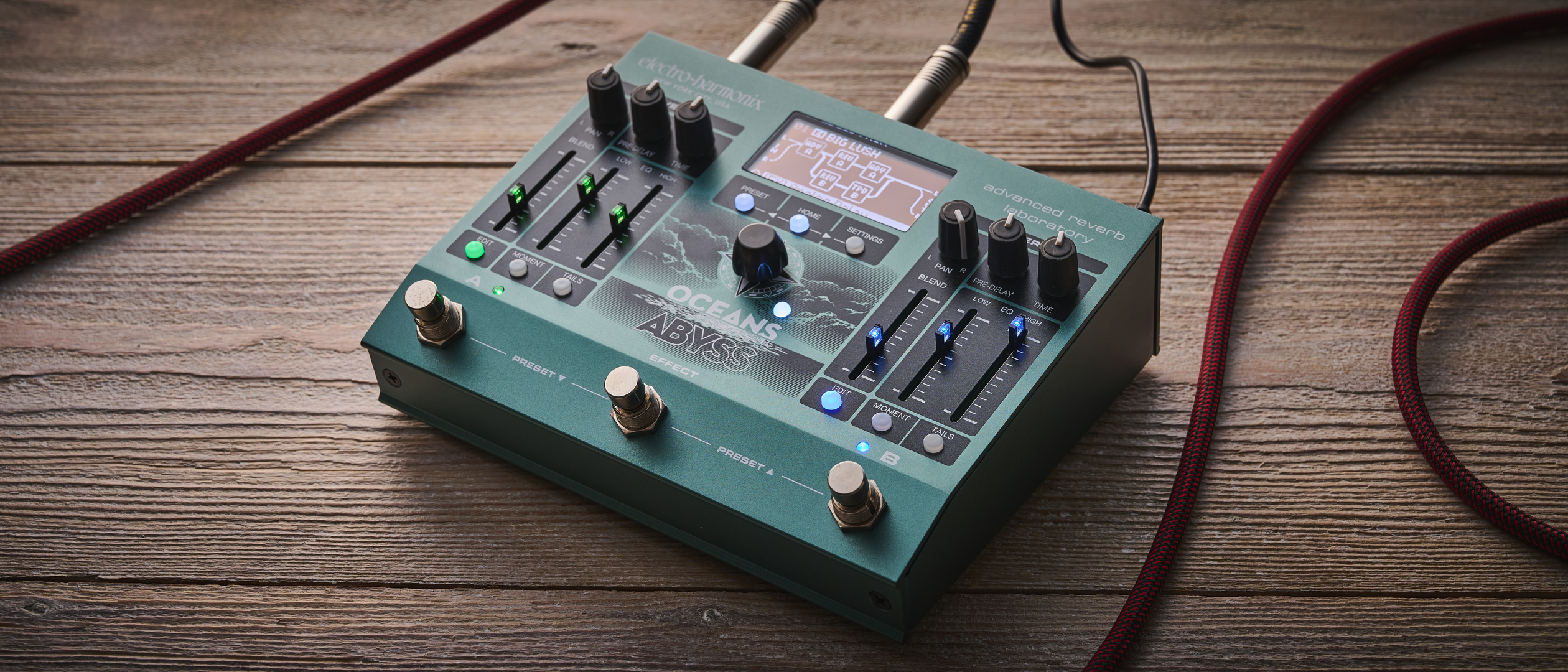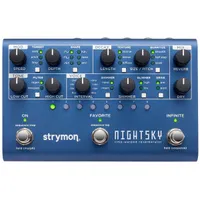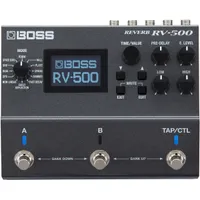MusicRadar Verdict
Although let down somewhat by the usability and lack of a companion app for Mac, the Electro-Harmonix Oceans Abyss is a really rewarding reverb pedal if you’re willing to stick with it. Its ability to carve your reverb sounds and season them with modulation effects makes for some really impressive tones, especially when you start experimenting with the stereo field and two guitar amps or sound sources.
Pros
- +
Superb selection of presets to get you started.
- +
Lots of additional delay, modulation, and saturation tones.
- +
Blend two reverbs together in gorgeous stereo.
- +
Plenty of flexibility in signal chain and routing.
Cons
- -
Using the menus isn’t very intuitive, and the encoder can be fiddly.
- -
Still no Mac version of EHX Port for easier editing.
MusicRadar's got your back
What is it?
Representing the second model in a seemingly new dawn of Electro-Harmonix pedals, the EHX Oceans Abyss looks very much the modern digital stompbox, heavy on features, connectivity, and packing a massive array of tones designed to make your guitar sound, well, massive.
It follows largely the same format as the POG3 in terms of chassis design and the use of sliders, but takes the OLED screen and puts it at the forefront of the unit with a multi-directional encoder for navigation. Each reverb engine has its own dedicated controls which allow you to blend, pan, adjust EQ, and set pre-delay and time functions using physical knobs and sliders.

It’s not just reverbs that are available - you can harness the power of delay, tremolo, chorus, flanger, phaser, saturation, and a bit crusher to supplement your soundscapes
It features 10 reverb algorithms with dual paths that allow you to blend and swap to your heart's content, and it’s all presented in glorious stereo. It’s not just reverbs that are available though - you can harness the power of delay, tremolo, chorus, flanger, phaser, saturation, and a bit crusher to supplement your soundscapes, all customisable to any part of the signal chain or stereo field. You can even use these on their own, making the Oceans Abyss much more of a multi-effect than just a pure reverb pedal.
It’s clearly designed to compete with feature-heavy units from Strymon and Boss for space on the modern guitarist’s pedalboard, and it’s priced similarly to Strymon’s Big Sky and the Boss RV-500, which means it has some serious competition. It’s been a while since the EHX Oceans 12 and Grand Canyon launched, so it’s about time we got something a little more contemporary from an extremely popular brand.
Specs
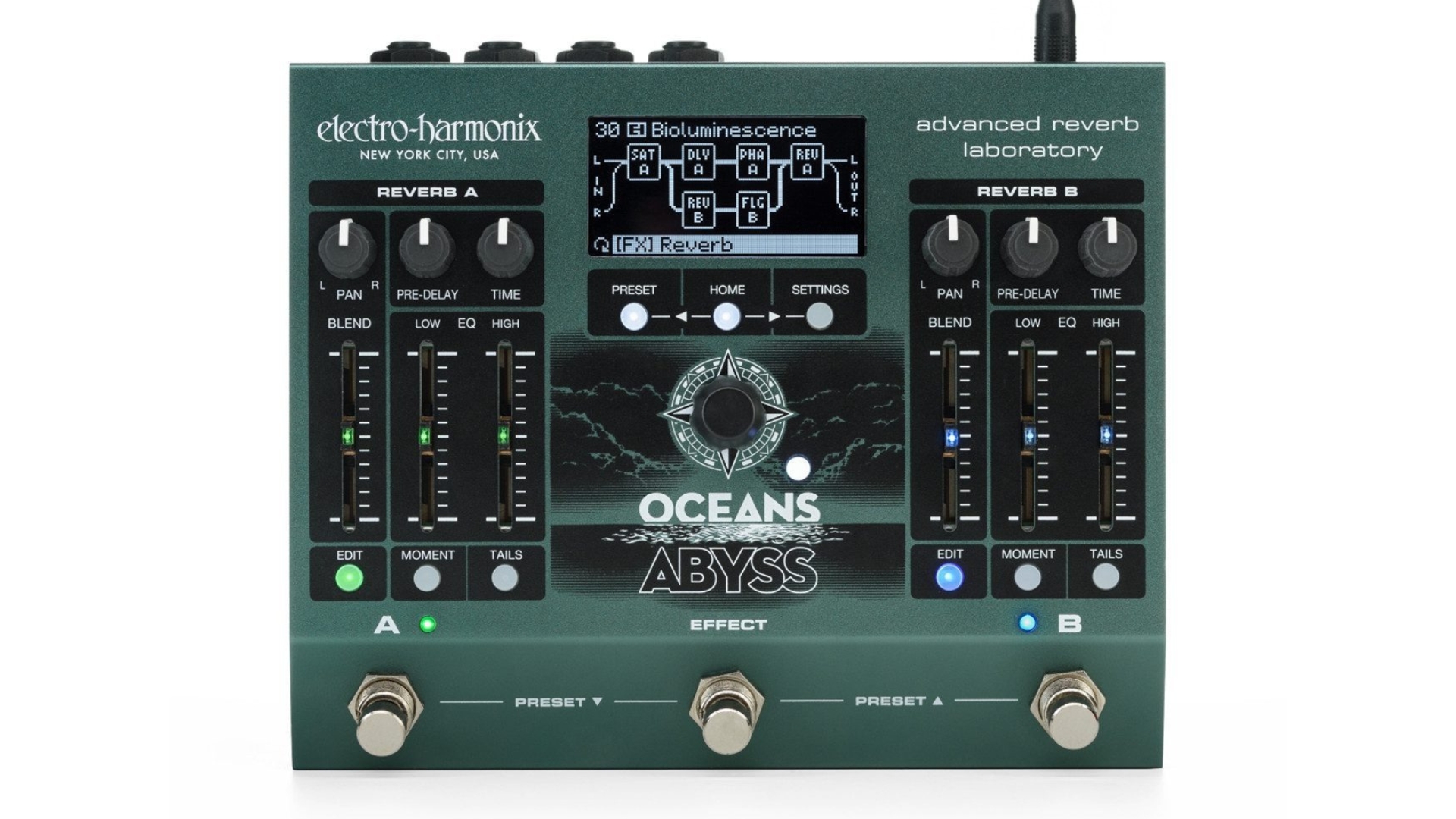
- Launch price: $495 / £475 / €499
- Type: Reverb/multi-effects pedal
- Controls: Pan, pre-delay, time, blend, low, high, edit, moment, tails, preset, home, settings
- Connectivity: 2 x 1/4" in, 2 x 1/4” send/return, 2 x 1/4" out, 1x 1/4” footswitch, 1x 1/4” expression, MIDI in/out, USB-C
- Bypass: Buffered
- Power: 9V DC power supply (included)
- Dimensions: 57.15 x 180.97 x 146.05mm
- Weight: 800g (1.76lbs)
- Contact: Electro-Harmonix
Build quality
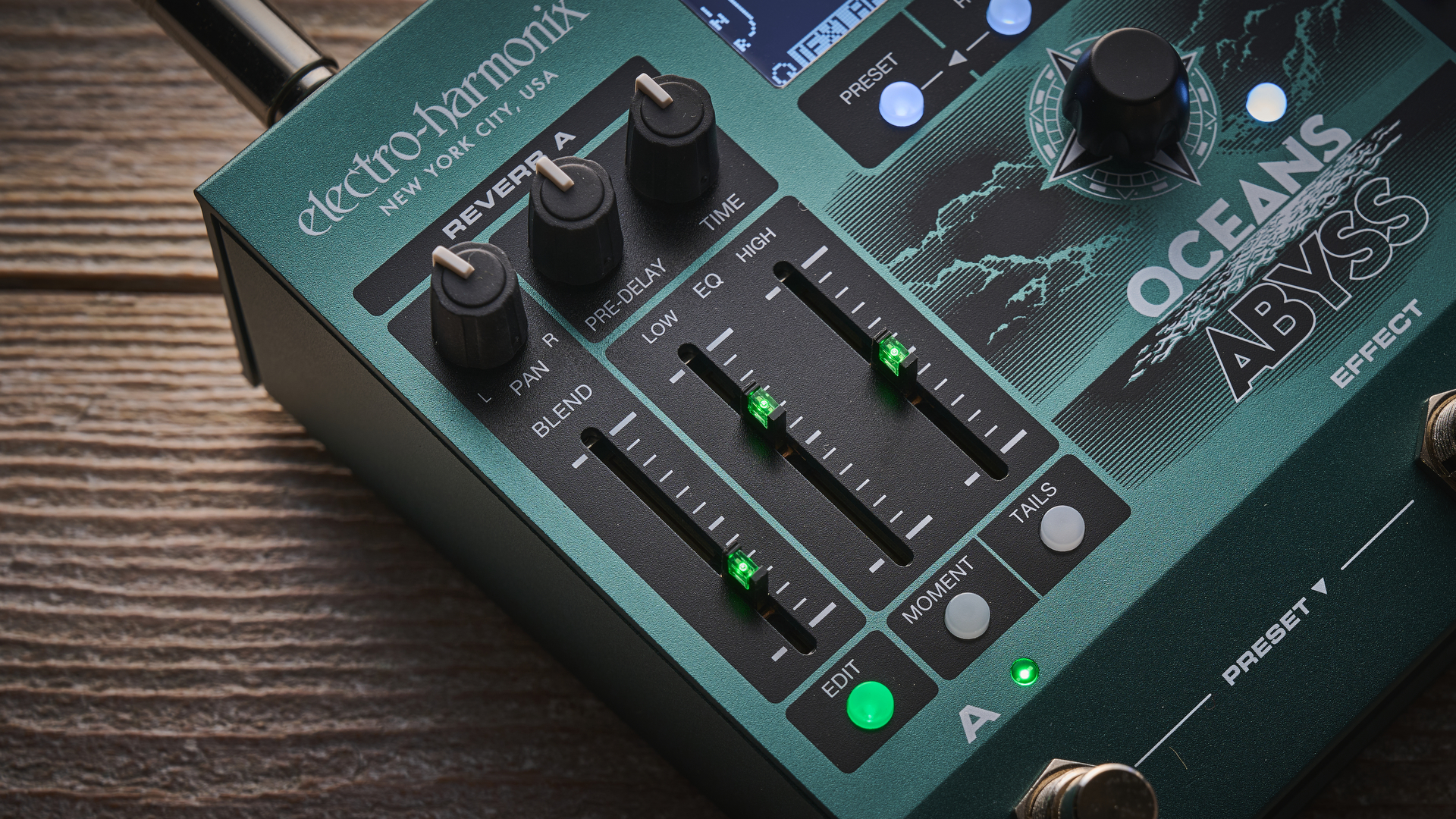
Build quality rating: ★★★★☆
Having recently reviewed the POG3, from my inspection, the chassis is exactly the same in terms of its shape, size, and weight. It’s not too heavy, and it feels solidly built. The footswitches are angled towards the player and are of the soft click variety, giving quiet switching under the press of my finger.
The front panel is very different from the POG, though. Here, the screen takes full focus with the encoder knob forming part of the maritime-inspired logo emblazoned on the center of the gunmetal green exterior. The encoder knob feels solidly applied, and its shape means it should stay out of the way of any mistimed stomps during a show.
Want all the hottest music and gear news, reviews, deals, features and more, direct to your inbox? Sign up here.
It’s a similar story with the knobs that control various functions across the top of the pedal, but I do worry about those sliders. A fairly insignificant push with my finger to the side of the slider doesn’t exactly fill me with confidence, and I worry about them when placing the pedal in a soft pedalboard case or chucking it in a backpack. They’re attached well, and I love the fact that they light up, but it’s the nature of the design that they’re not the most robust feeling, and having part of the chassis open could also lead to things getting lodged in there over time.
Usability
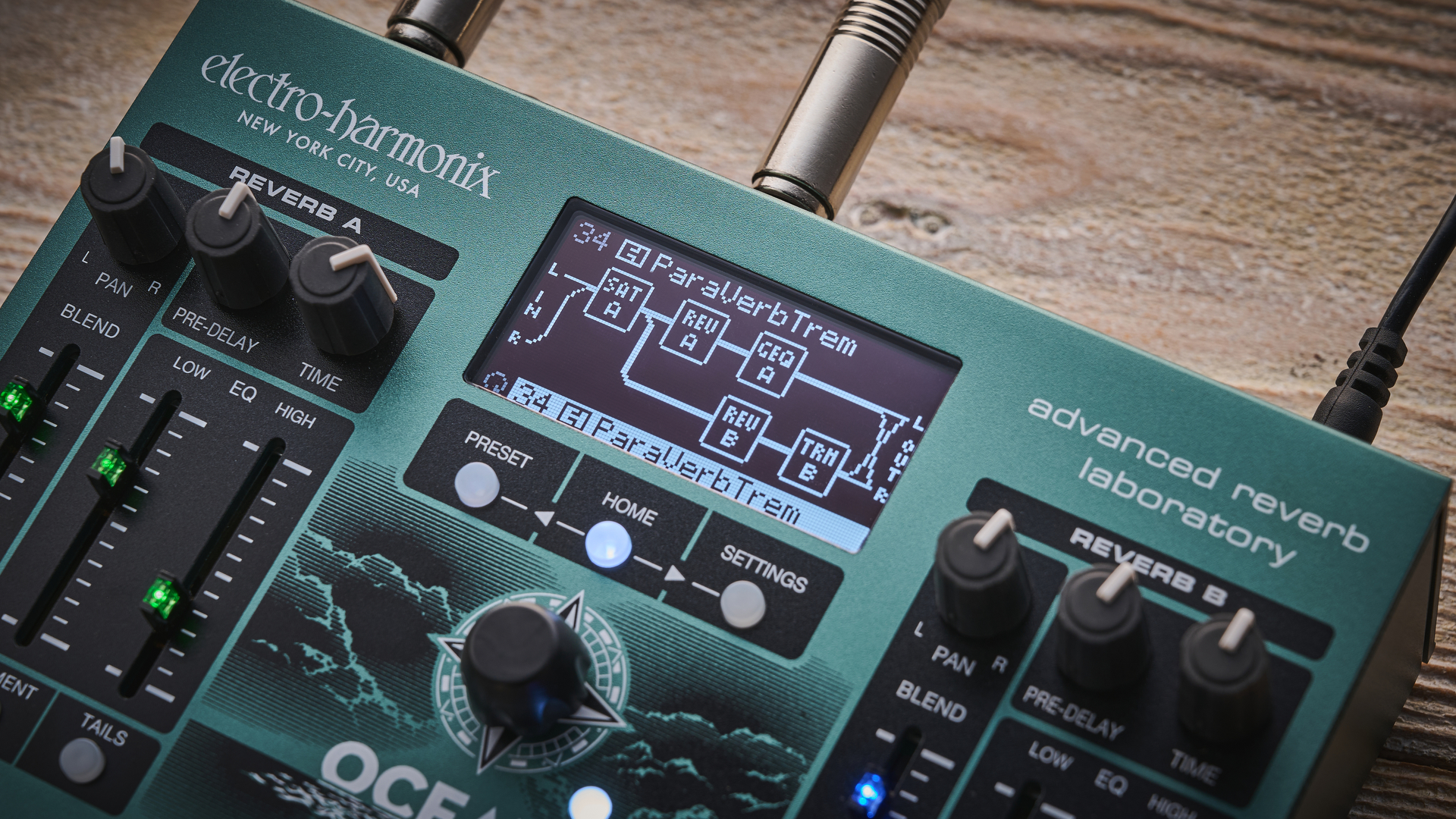
Usability rating: ★★★☆☆
As is usual when I review gear, I like to just sit down (or stand up) at first and have at it without diving into the manual. Despite using the POG3 already, which shares a similar UI, I still find the Oceans Abyss confusing initially to get into. Moving the encoder in different directions presents me with different screens, and I can’t find a way to switch presets initially. I hit the ‘home’ button, which gets me a view of the preset signal path, and it’s only once I press the preset button that I’m able to start switching using the encoder.
As I find out, you can also switch presets by pressing either two of the three footswitches in combination with the center switch, but that isn’t all that convenient while I sit at my desk with the pedal plugged into my audio interface. With this initial hurdle overcome, I’m able to start navigating the pedal through its presets and diving into the signal path to make changes, which all-in-all feels pretty intuitive.
Certain controls are changed using the encoder and others require me to tweak the physical knobs or sliders depending on the particular parameters. There are pages and pages for each part of the signal chain, meaning plenty of opportunity for sound sculpting.
Now, you might be thinking ‘just read the manual’, and eventually I have to succumb to doing that, because I cannot for the life of me work out how to save my preset now I’ve finished tweaking it. Scrolling through the menus gives me nothing, trying various button presses results in more of the same, with a menu popping up asking me if I want to default the preset, but no option to save that I can see.
Even a quick Google search draws a blank. Defeated, I head to the EHX website and download the manual in order to find out how to save my carefully curated patch - which it turns out requires a one-second hold and press of the preset knob.
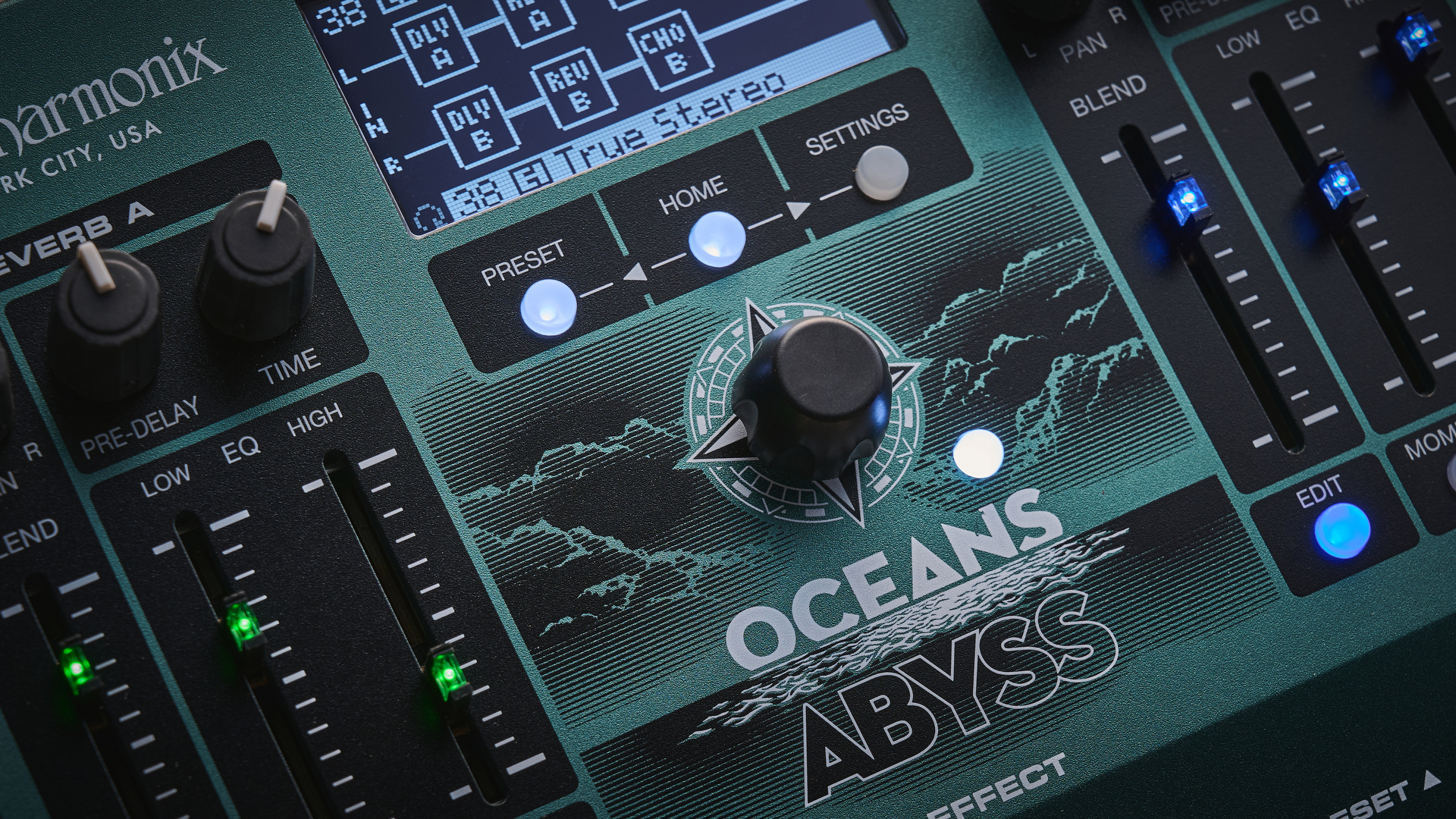
Once I spend a little time with the pedal, I find myself able to customise patches at will, but to be honest, it always feels a little bit fiddly with the encoder. Although nice as an endlessly rotating knob, the stubby button makes for uneasy directional pressing at my fingertips, resulting in miscues that change settings I didn’t want, or it taking me to a completely different menu I wasn’t anticipating. You would get used to it with time, but it’s definitely not a seamless experience getting acquainted with it.
With a large portion of musicians using the Apple ecosystem, it seems like a bit of an oversight not to have an app ready for the launch of such an in-depth pedal
I consider myself pretty clued up on digital pedals, being a gear reviewer and all, so it’s seldom the case I come across something where I can’t work out the basics for myself. Consider me humbled and slightly disappointed, then, that this pedal isn’t easier to use.
There’s a further annoyance too, because there’s still no EHX Port app for Mac users, which is something I criticised the POG3 for months ago. With a large portion of musicians using the Apple ecosystem, it seems like a bit of an oversight not to have an app ready for the launch of such an in-depth pedal, especially as the POG3 has been out for over half a year at the time of writing.
Sounds
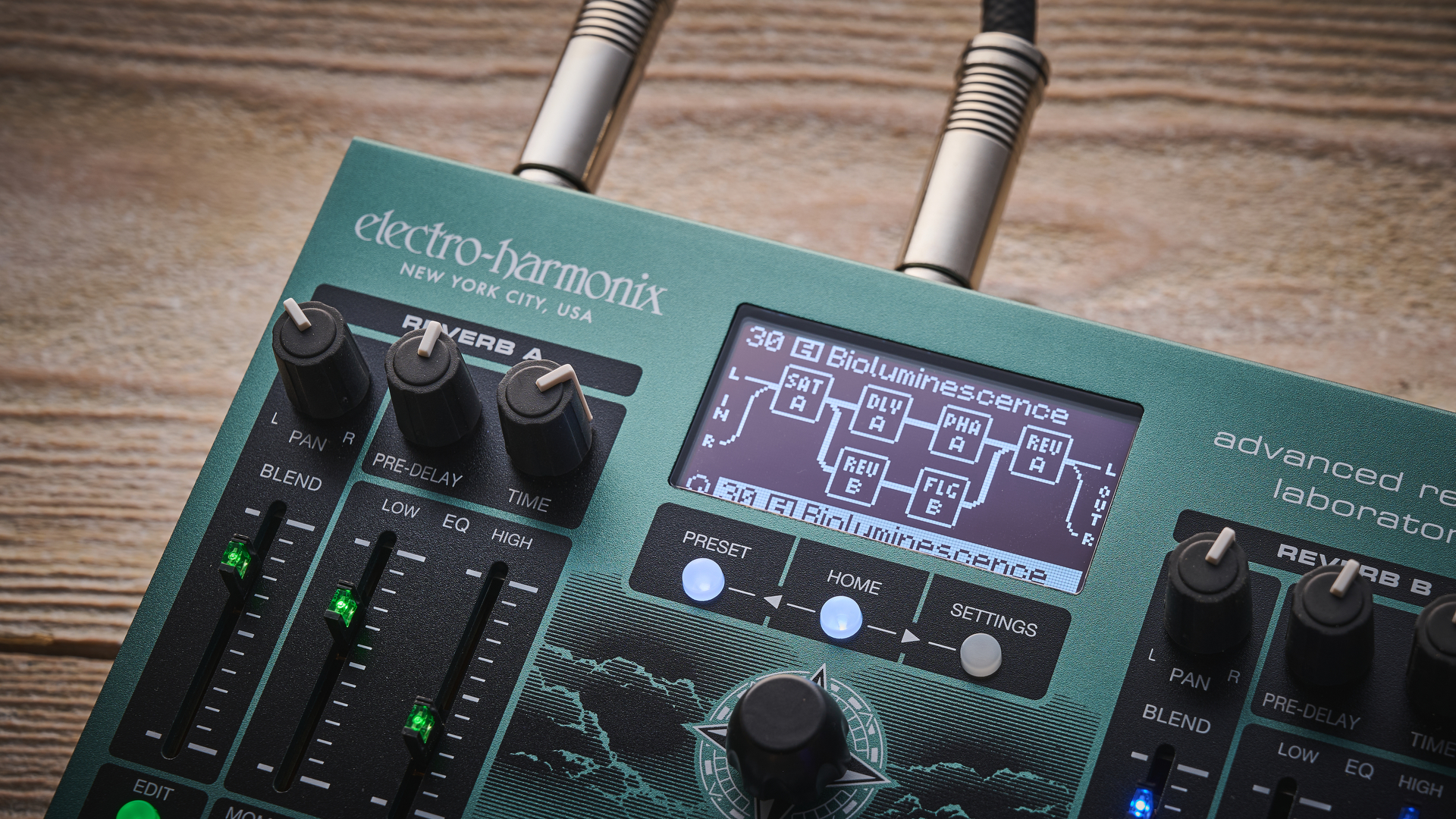
Sounds rating: ★★★★½
Now that I’ve got to grips with the functionality of the pedal, it’s time to move on to the rub - the sounds. My testing begins with a Gretsch semi-hollow, a Universal Audio interface with the pedal going into inputs one and two, and two UA plugins based on the Fender Twin and Vox AC30. The idea is to get a scope of the stereo possibilities free from any phasing or ground loops potentially caused by using two guitar amps.
The ability to pan each of the reverbs to my liking makes for some super soundscapes
With my headphones on, the stereo spread is fantastic. The ability to pan each of the reverbs to my liking makes for some super soundscapes, blending multiple reverbs together with various modulation effects to create some truly wacky - and some might say - unusable sounds. It’s glorious though, and the ability to add in additional effects to then shape the base reverb algorithms is mana for the experimentally minded.
Of course, not everyone’s interested in colossal reverbs that give you the feeling you’re going through the process of spaghettification, so thankfully Oceans Abyss is more than capable of producing more traditional reverb sounds. The spring setting is delightfully metallic, giving you those tinny pings of steel when you clamp down on a note that rings on beyond before cutting off dramatically.
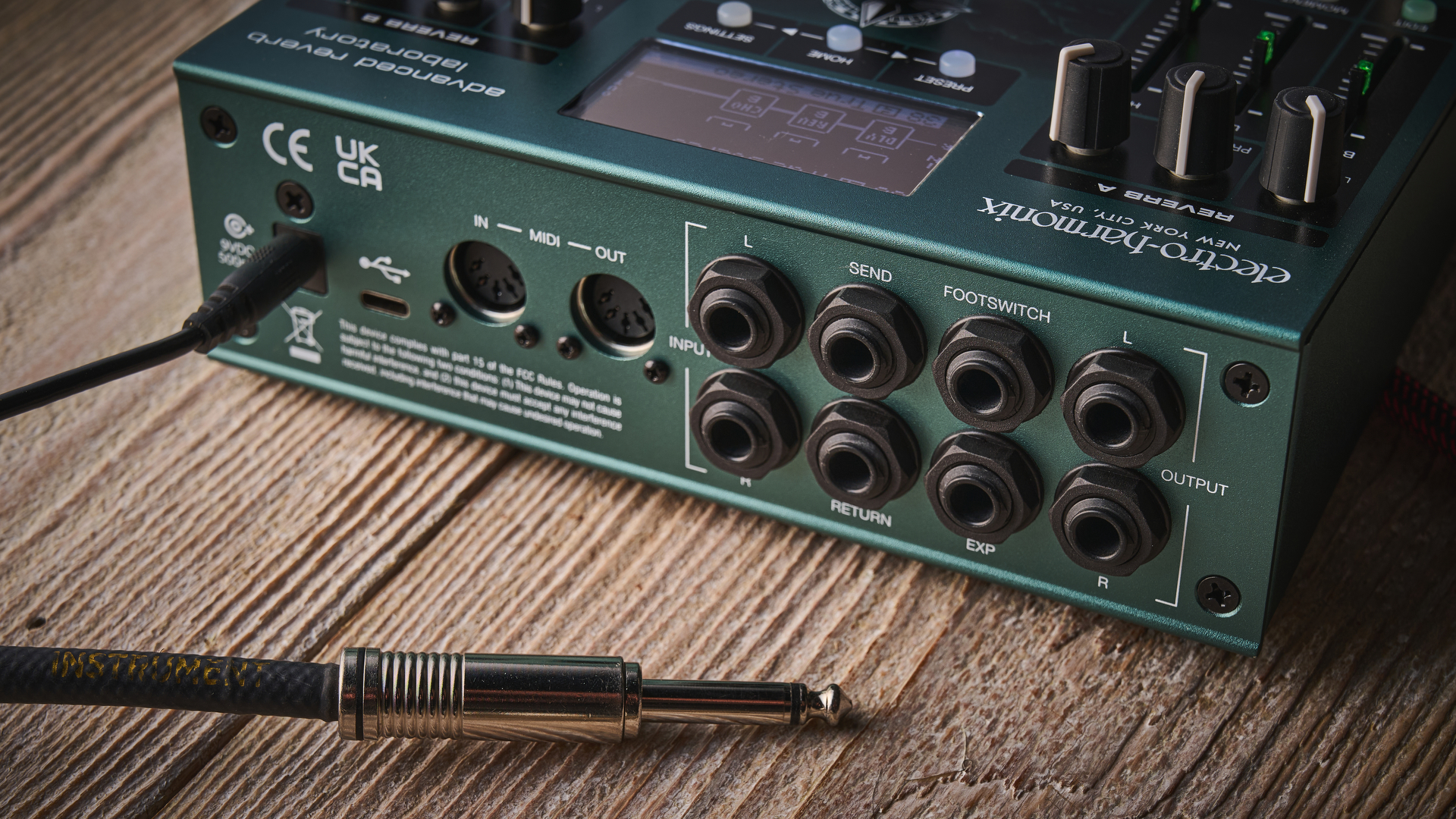
It’s got EHX’s Holy Grail sound built into it, as well as a 6G15 mode named for the tube-driven spring unit in Fender amps, which ends up being a staple of my sonic exploration as I customise my own settings. The plate offers a beautifully bright tonality that’s great for accentuating my lead licks, while realistic-sounding room algorithms and a hall sound offer plenty of flexibility for more reined-in tones.
It receives many plaudits from my bandmates for the inventiveness of the presets,
Taking the Oceans Abyss to my rehearsal space, I wire it up into the effects loop of my Orange tube amp to see how it interacts with the rest of the band. It receives many plaudits from my bandmates for the inventiveness of the presets, and there are a couple that we find fit perfectly into our sound without much need to edit.
The presets overall are fantastic, and I get a lot of fun and playtime messing around with them. With 125 to choose from, I’m not shy of options either, with sounds ranging from cosmic spirals of rack and ruin through to more normal tones like tape echo, and studio-style chorus.
One criticism I do find with the sounds is that they’re very heavy on the mix knob, and I end up feeling like they need a lot of taming in the low end in particular as things get pretty dense with my full band going. It’s something I can edit out on the unit itself, but once again, I find myself cursing the lack of an app for my MacBook to make it easier to whizz through them all, so I can bring it back to the next rehearsal with a more mix-ready sound.
Verdict

The Oceans Abyss is a real paradox of a pedal. The usability is not as good as I was hoping, thanks to a dense menu system and a fiddly encoder that’s prone to wandering where you don’t expect it to. Having to look up in the manual how to save a preset explains perfectly how the usability of the pedal doesn’t appear to have been at the forefront of the design.
Despite that, it offers some incredible sounds, and once you get your head around how to use it, the ability to combine them in ways that will allow you to sculpt some truly unique soundscapes. As well as the more esoteric, it also has plenty of traditional sounds in it too, and at times it can really feel like more of a multi-effects pedal rather than just a straight reverb pedal.
MusicRadar verdict: Although let down somewhat by the usability and lack of a companion app for Mac, the Electro-Harmonix Oceans Abyss is a really rewarding reverb pedal if you’re willing to stick with it. Its ability to carve your reverb sounds and season them with modulation effects makes for some really impressive tones, especially when you start experimenting with the stereo field and two guitar amps or sound sources.
Test | Results | Score |
|---|---|---|
Build quality | Rugged chassis, but sliders are a little flimsy. | ★★★★☆ |
Usability | Hard to get your head around, and still no app for Mac. | ★★★☆☆ |
Sounds | Massive selection from classic to unique. | ★★★★½ |
Overall | A pedal with bags of great sounds, let down by UI. | ★★★★☆ |
Also try
Strymon NightSky - $429/£399
If you like experimental reverb tones, the Strymon NightSky is the gold standard. It offers an amazing array of flexibility in carving out reverb tones, and much like the Oceans Abyss offers way more than just some nice sounding reverb algorithms.
Read more: Strymon NightSky review
Boss RV-500 - $439/£299
On the other hand, if you’re less experimental, Boss’ RV-500 features some superb algorithms that will have the basics covered for you, with some scope for experimentation thanks to the inclusion of some of Boss’ classic delay tones.
Read more: Boss RV-500 review
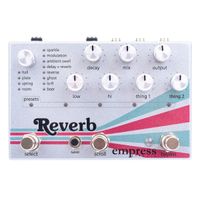
Empress Effects Reverb - $494/£459
With a massive selection of 32 reverb algorithms on offer, the Empress Effects Reverb has a colossal sound choice. It’s surprisingly intuitive to use too, despite the lack of a screen that features on the other options here.
Hands-on videos
Chords Of Orion
John Nathan Cordy


Matt is a Junior Deals Writer here at MusicRadar. He regularly tests and reviews music gear with a focus on audio interfaces, studio headphones, studio monitors, and pretty much anything else recording-related. Matt worked in music retail for 5 years at Dawsons Music and Northwest Guitars and has written for various music sites including Guitar World, Guitar Player, Guitar.com, Ultimate Guitar, and Thomann’s t.blog. A regularly gigging guitarist with over 20 years of experience playing live and producing bands, he's also an alumnus of Spirit Studios, where he studied studio engineering and music production.
You must confirm your public display name before commenting
Please logout and then login again, you will then be prompted to enter your display name.
